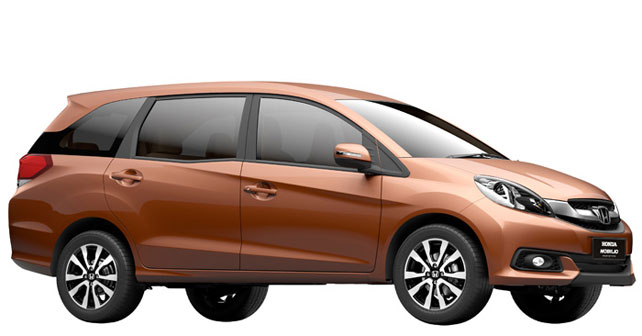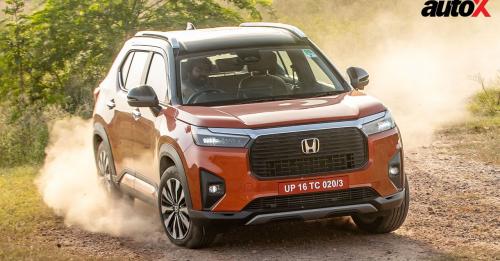Honda may have been dealt a few blows over the past couple of years, but that’s only made it more resilient and stronger than ever. They’re far from giving up the fight – round two is only just beginning.
It’s no secret that Honda dealers have suffered over the last few years – especially considering that, in the past, every model in the line-up would virtually sell itself thanks to the blue-chip brand image that Honda carved for itself in India. Things went pear shaped when consumer preference shifted – suddenly, and quite unexpectedly – in favour of diesel-powered machines. Honda has always extolled the benefits of smooth, high-revving petrol engines – with the ‘iVTEC’ tag worn like a badge of honour. As a result, it’s been painfully slow to adopt diesel technology. But it’s finally done so, and the Indian market has been one of the driving forces behind this shift in philosophy.
A clear sign of the importance of India is the appointment of Yoshiyuki Matsumoto as President & CEO of Honda Motor India. He holds a number of other very important titles within the Honda Motor Company, which put him in charge of development, purchasing and production of the Asia and Oceania region. The fact that Matsumoto-san now spends the majority of his time in India is a clear reflection of the importance of our market. During a round-table discussion, Hiroshi Kobayashi, President, Asian Honda Motor Co., and Takanobu Ito, CEO of Honda, pointed out that a talented engineer like Matsumoto is in India so that he can better understand the needs of the market and deliver products accordingly. He is, after all, the man who invented the central fuel tank layout. It’s this invention that led to the success of the Jazz in markets across the world, and – according to Honda – brought about the small car revolution in international markets.
This layout also forms the foundation for Honda’s current design ethos – ‘Man Maximum - Machine Minimum.’ So, having a person of the stature of Matsumoto-san in the country is of huge importance to Honda Motor India. And he comes at a time when Honda is readying its second plant in the country. It also comes on the back of a resurgence in sales for Honda since the introduction of the Amaze earlier this year with a 1.5 litre ‘Earth Dreams’ diesel engine. This has been followed up with the all-new City – the car that started it all for Honda in India. But what’s of crucial importance is the fact that the same diesel has found its way into the engine bay of the City as well (see our full review elsewhere in this issue).
This engine will also likely be found in a number of other models that Honda is planning for the Indian market in the near future. After the introduction of the new City, the Mobilio MPV is next in line. The Mobilio is built on the Brio platform, but – like the Amaze – it seems to be able to create its own identity pretty convincingly. We saw the car on Honda’s test track at Twin Ring Motegi, a few hours from Tokyo, and I have to say that I came away quite impressed after an initial look. It certainly has more road-presence than Maruti’s Ertiga.
The Mobilio gets a board chrome band up front that differentiates it from the Brio and Amaze. In profile, meanwhile, it has some sharp creases and interesting lines that help the overall design blend quite well. It’s the rear three-quarter view that I felt looked best though. It has a tapered rear-quarter glass that gives it an aerodynamic profile, and a pair of pretty chunky lights at the back that give the rear a strong, masculine look – although, that does put it at odds with the more feminine front.
On the inside, the Mobilio seems surprisingly spacious, with three rows of seating – of course, the third row is only suitable for children. The dashboard is lifted from the Brio / Amaze, but doesn’t seem out of place here. The middle row gets AC vents in the roof and a fair amount of space as well. All in all, it seems very well executed, and should provide stiff competition to the Ertiga – and even the aging Innova.
The next model to carry the same engine will be the all-new Jazz. Now, the previous generation Jazz was an autoX favourite. In our 2012 small car mega test, consisting of 10 of the leading hatches in the market, the Jazz finished second only to the practicality of the Hyundai i20 – and that too just by half-a-point! The all-new model, though, seems to have lost some of that sharp edged nature which endeared it to us so much. This one looks almost like a mini-MPV in itself. But, what that results in is even more space on the inside. On the outside, the front and rear have a contoured pair of lights that give it some character, while it has a sharp crease in profile. The interior, meanwhile, is very impressive – not only is it spacious, but it’s stylish as well. The AC vents are sleek, while the entertainment and AC controls form a futuristic, and clean, touch-panel centre console. When the new Jazz comes to India, in the second half of 2014, it’ll come with both petrol and diesel power.
The other interesting machine that we saw from Honda was one they revealed at the Tokyo Motor Show – the all-new Vezel compact crossover. Now this is going to be a very important model for Honda in the US, European and Japanese markets, but we’re not sure at this point if it’ll make it to India. If you recall our June 2013 issue, we previewed this machine and speculated that it would, in fact, make it to our market by late 2015 or early 2016. But Honda hasn’t finalized its plans as yet, because cost could be an issue for a sophisticated machine like the Vezel in a market that appears to be gravitating towards more economical crossovers.
In keeping with Honda’s current design philosophy, the Vezel has a strong front end, a sharp crease that runs up the side and ends up in the C-pillar, which also incorporates the rear door handle. The taillights make a strong statement at the rear, and the interior seems equally contemporary. This will certainly be a very stylish machine on the road. At present, no diesel motors have been announced for the Vezel, but that’s simply a matter of time. Whether or not Honda manages to make a business case for India, though, remains to be seen. There could well be an all-new compact SUV based on the Brio platform judging by how versatile it’s already been. What’s clear, though, is the fact that Honda will definitely have a compact SUV in India sooner rather than later. As Matsumoto-san said, “It’s the sales of vehicles with three-rows and SUV’s that are growing in India, but the price has to be affordable.” He understands fully well that their challenge is not only to create vehicles that people want and desire, but also that they can afford and are willing to pay for.
Honda’s production capacity will practically double in the very near future when its new plant goes online. There are also plans to have a complete R&D facility in India in the next few years. And Matsumoto-san didn’t rule out the option of Honda’s next generation of small cars being developed entirely from India. The wind is clearly back in Honda’s sails – the next few years will be crucial!





























Write your Comment